Cley next the Sea
|
A lovely North Norfolk Coast village, famous for its windmill and nature reserve |
|
An Introduction to Cley next the Sea
|

These days Cley next the Sea is nearly a mile from open water, but back in the middle ages this lovely Norfolk village was an important trading port. Cley does have a beach, which is mainly shingle and is accessed by walking over the marshes. The area between the village and the sea is now occupied by one of the best nature reserves in Norfolk and has been designated an Area of Outstanding Natural Beauty. The nature reserve contains a brand new environmentally friendly visitor centre incorporating an observation area. The village itself is dominated by the picturesque 18th century windmill standing on the edge of the marshes. This famous landmark fell into disrepair in the early 20th century and has been restored into fabulous guest accommodation and is also open to the public. At the top end of the village is St. Margaret's church, next to the village green; dating back to the 13th century, it almost seems too cathedral like for a village church! Also in Cley you will find a brilliant delicatessen where you can purchase your picnic, a local craft gallery, a famous smoke house, a bookshop, a couple of tea shops and a country pub. |
|
|
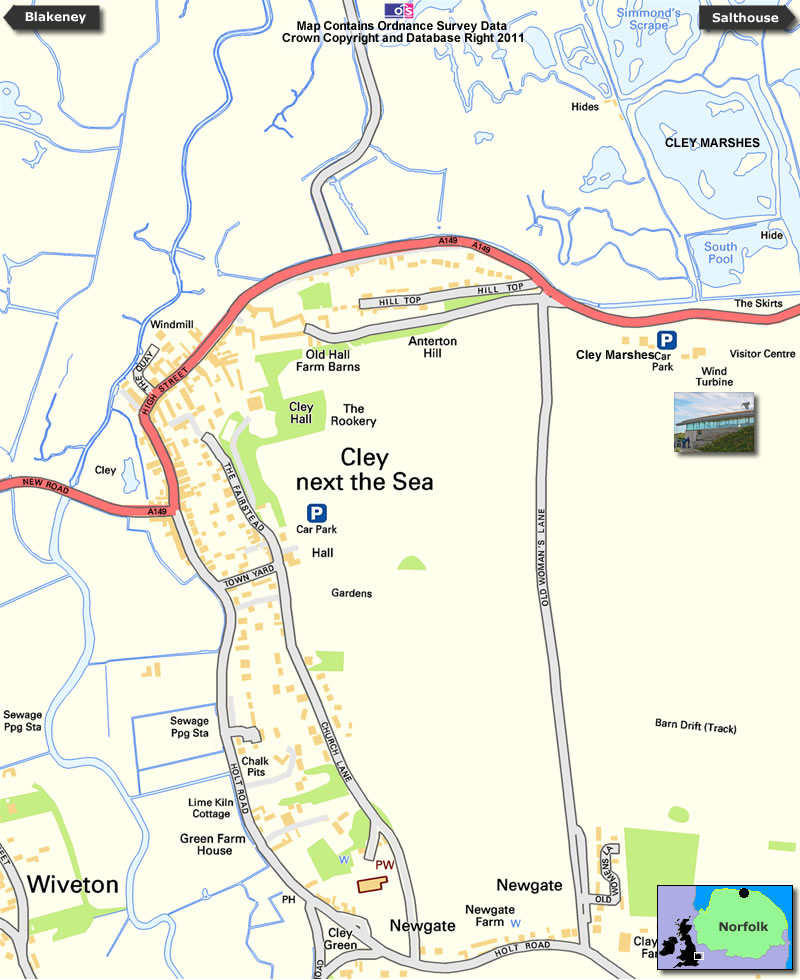
|
|
| |
|
Cley next the Sea Guided Picture Tour
|
We start our tour of Cley next the Sea by parking the car in the car-park by the village hall (free) and then walk along the cobbled paths into the village centre. The route takes us past plenty of pretty flint Norfolk cottages. |
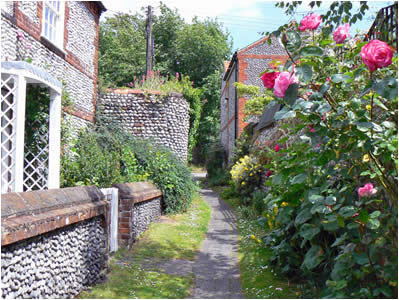
Cley next the Sea paths |
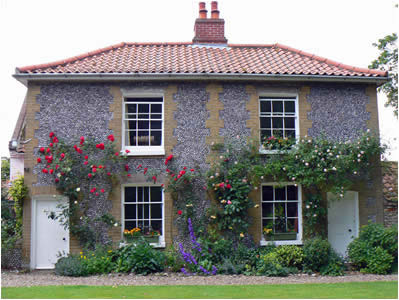
Cley next the Sea Property |
The main street is a little narrow in places for such a busy road, but it contains some beautiful buildings. Cley contains properties with an interesting mixture of Georgian and
Flemish architecture.
The Flemish architecture came to Norfolk in the middle ages when strong trade links were developed with Dutch weavers. |
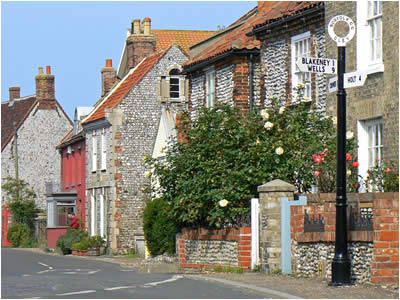
The main street in Cley |
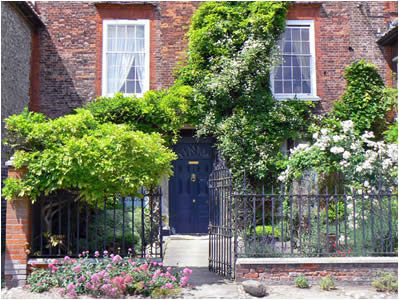
Cley next the Sea Georgian Cottage |
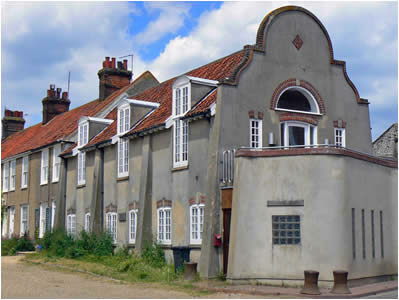
Flemish architecture |
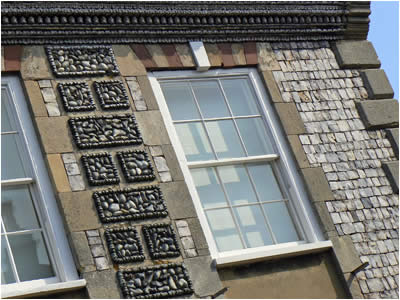
Detailed flintwork |
Strolling around the village centre, we come across some lovely shops and galleries; including Made in Cley, a gallery offering pottery, sculpture, jewelry and prints. It was founded in 1984 and all the products are hand made on the premises by a group of craftspeople. You will also find a picture gallery and an excellent bookshop. |
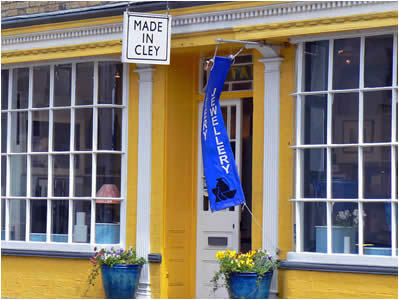
Made in Cley, craft shop in Cley next the Sea |
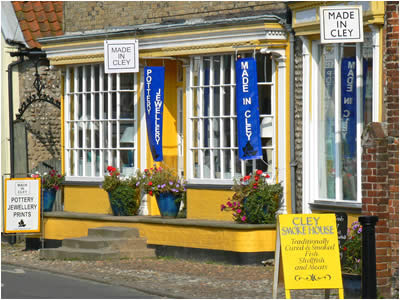
Shopping in Cley |
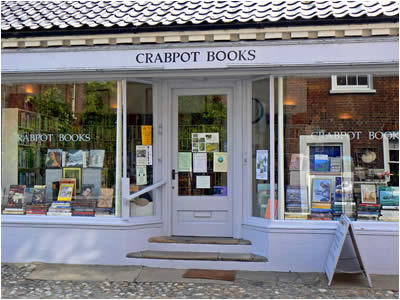
Crabpot Bookshop |
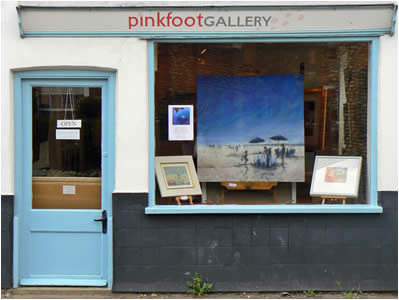
Picture Gallery in Cley next the Sea |
| |
|
John Pryor opened the Picnic Fayre Delicatessen set in the historic Old Forge, in 1984. It has gone from strength to strength over the years, winning awards and launching many of its own products. Similarly, Cley Smokehouse has been producing high quality hand crafted smoked and specialist foods for over 30 years. Products include kippers, herring, prawn, duck, mackerel, salmon, trout, cod and eel. |
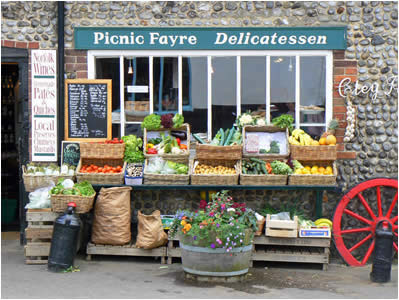
Picnic Fayre Delicatessen in Cley next the Sea |
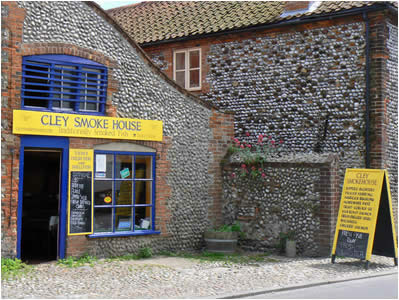
Cley Smoke House |
The village also contains a mixture of other facilities, including a hotel and pub (the George) with a garden opposite. There is also an number of bed and breakfast, holiday cottages and tea rooms (with gardens allowing dogs). |
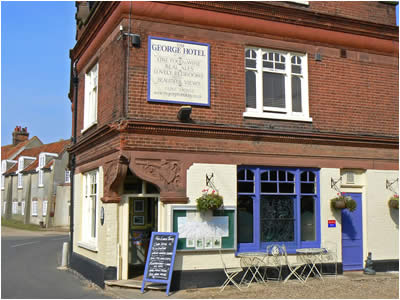
The George Hotel and Pub in Cley next the Sea |
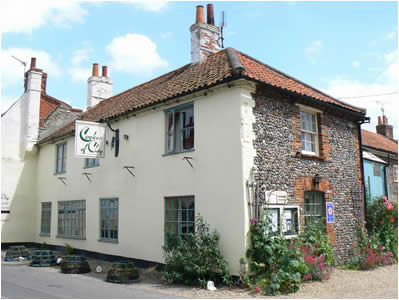
Cookes B&B Cley next the Sea |
Between the main street and the marshes is
the most famous landmark of Cley, the 18th century windmill. The best known of miller was Steven Barnabas Burroughs, whose family worked and owned the Mill from 1840 to 1919, after which it fell into disrepair. In 1921 it was bought by Sarah Maria Wilson and converted into a holiday home. The conversion involved removing most of the working parts and fixing the cap and sails. The old stones, used for grinding the flour, were set into the ground nearby and the warehouses were converted into stables and boat sheds. The sails, fanstage and galleries were last replaced in 1988. The windmill is now a bed and breakfast and the owners usually allow visitors to take a look inside and climb to the top for superb views of the surrounding countryside. |
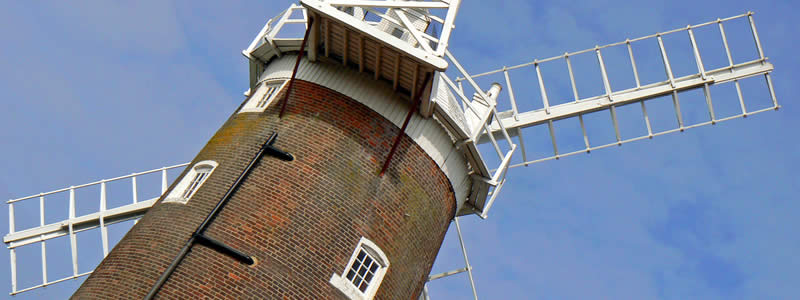
Cley Windmill |
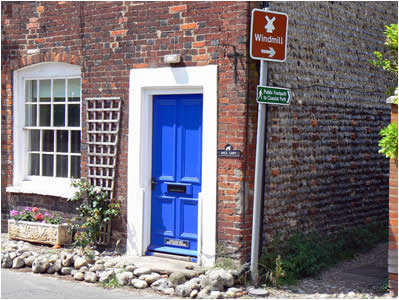
Cley coast path |
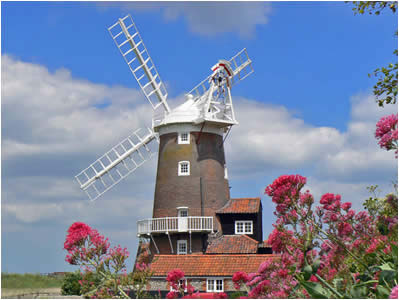
Cley Windmill |
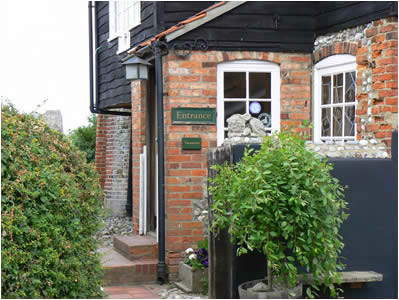
Cley Mill entrance |
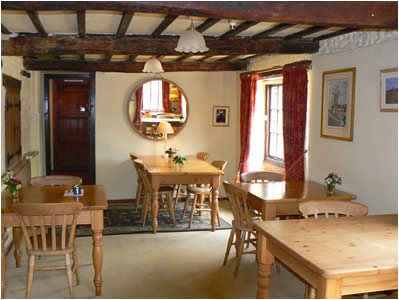
Inside Cley Mill |
Past the windmill is Cley marshes, where a network of paths cross over creeks that head towards the sea.
The walk over the marshes is superb and you get good views back towards Cley Mill. |
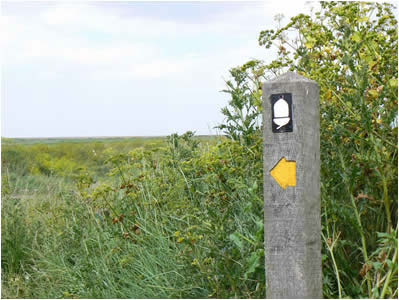
Cley marshes footpath |
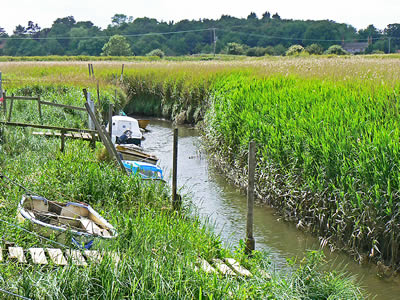
Cley marsh creek |
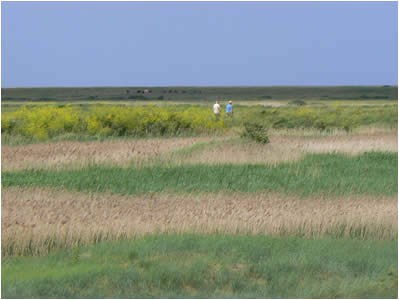
Walking on Cley marshes |
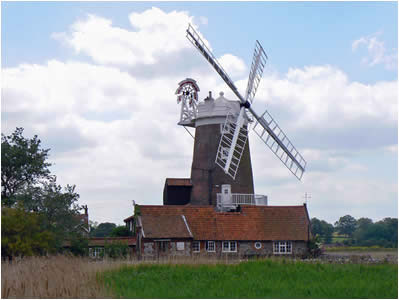
View of Cley Mill from the marshes |
On the edge of the marsh, just outside the village is Cley Nature Reserve and visitors centre. Cley Marshes is one of the best nature reserves for bird watching in the UK. A patchwork of reedbeds, freshwater pools, dykes, grazing marshes and saline lagoons provide a habitat to attract a wide variety of birds to feed, breed and rest. You may see avocet, bearded tit and extremely rare bittern. The brand new environmentally friendly visitor centre incorporates an observation area, a café, and sales area. |
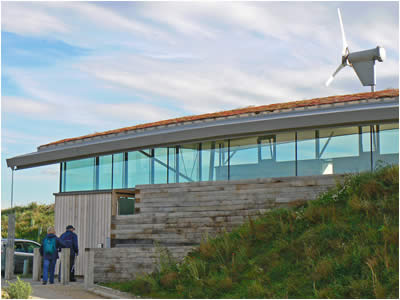
Cley Nature Reserve Visitors Centre |
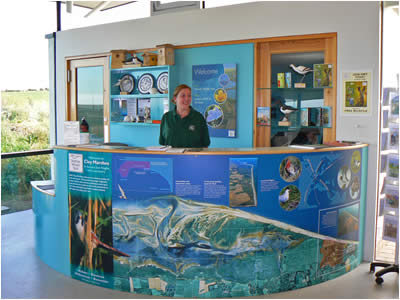
Environment Friendly Visitors Centre |

View over Cley marshes and nature reserve |
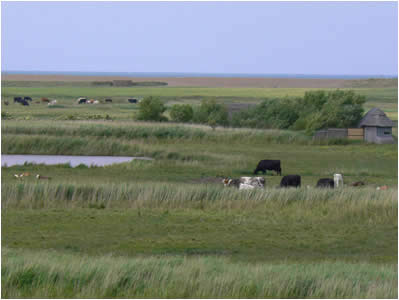
View towards the Coast at Cley next the Sea |
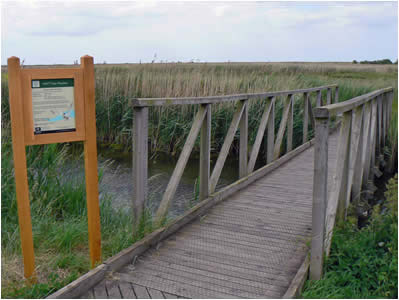
Cley nature reserve boardwalk |
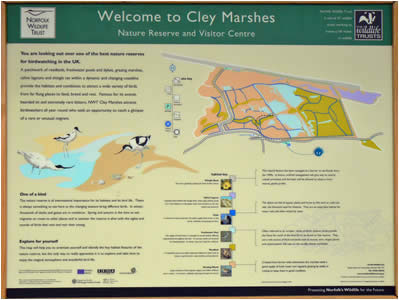
Cley Marshes Sign and Map |
Returning back through the village (best to use the network of paths, not the main road), we come to the wonderful parish church of St. Margaret of Antioch, dating back to the 13th century. Dominating this end of the village, it seems at times almost too cathedral like for the small village. |
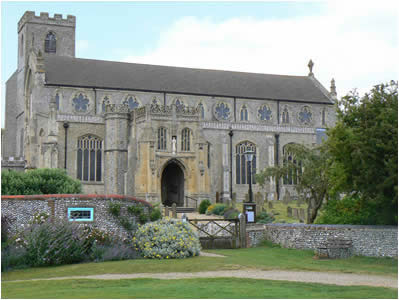
Church of St. Margaret at Cley next the Sea |
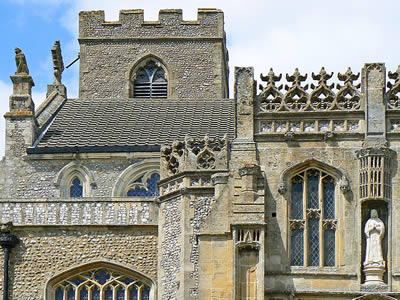
Stone detail at Cley Church |
| |
|
Moving inside, through the heavy door, if we look back we get a lovely view over the church grounds and village green. The church is vast and contains many interesting features including a seven sacrament font, bench ends depicting people and mythical creatures, brasses and old stained glass. |
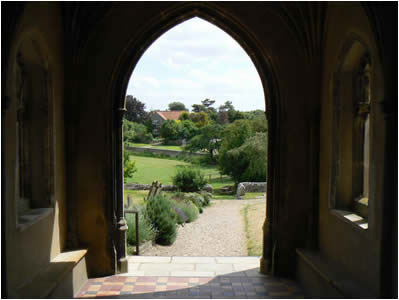
Church door at Cley |
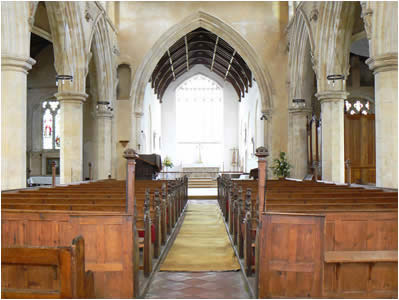
Inside Cley next the Sea Church |
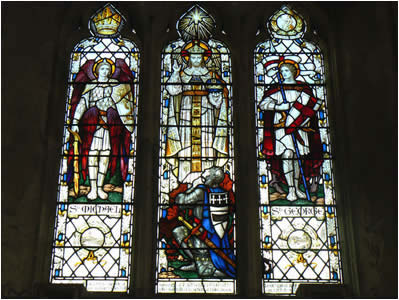
Stained glass windows in Cley church |
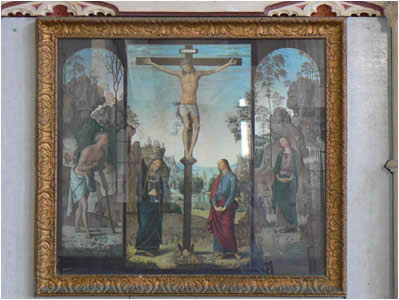
Art paintings in Cley church |
| |
|
Cley church has a collection of old graves - both inside the church and outside in the yard. The picture below left, is encouragement to anyone having relationship problems as it seems to show tombstones in love - perhaps "till death us do part" is not completely true for this husband and wife, who died during the 1880's! |
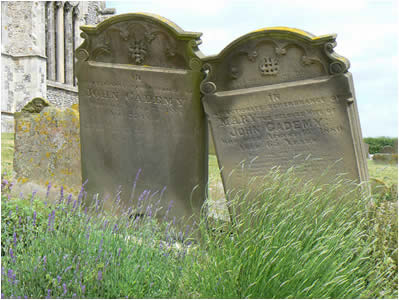
Tombstones in Love |
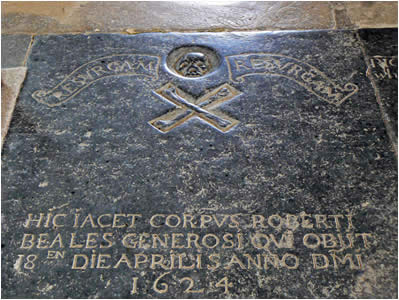
Old grave in Cley church |
In front of the church is the village green, surrounded by cottages and a village pub. It's hard to imagine but in medieval times the prosperous port of Cley was centred around this green. The town was one of the principal ports of East Anglia, exporting large quantities of wool and grain. The River was navigable to large ships and ran into the sea half a mile north west of Cley. In the early 17th Century the river began to silt up, largely as a result of land reclamation, and the once bustling port was forced to close. |
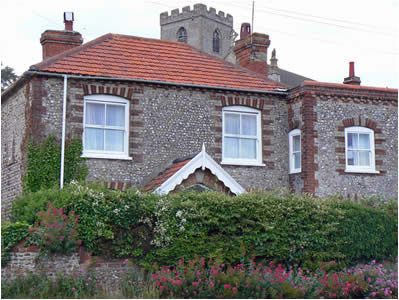
Cottages around the green by Cley church |
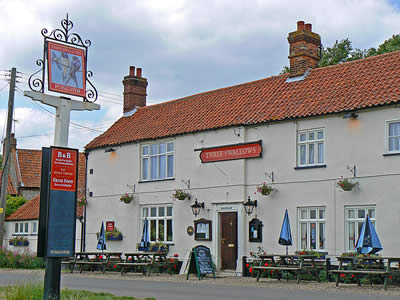
Three Swallows pub at Cley next the Sea |
Cley next the Sea Summary of What to SEE & DO
|
 Wander the cobbled paths to the village centre |
 Browse the shops and galleries |
 Buy a picnic from the delicatessen |
 Visit Cley Windmill (usually open to visitors) |
 Explore the cathedral like village church |
 Visit the nature reserve and visitors centre |
 Take a walk out over the marshes to the sea |
|
|
|
Our Verdict
|
Cley is a lovely village to visit and has some great things to see and do, but try and avoid the main road passing through the middle of the village by using the network of paths instead! |
|
|
|

